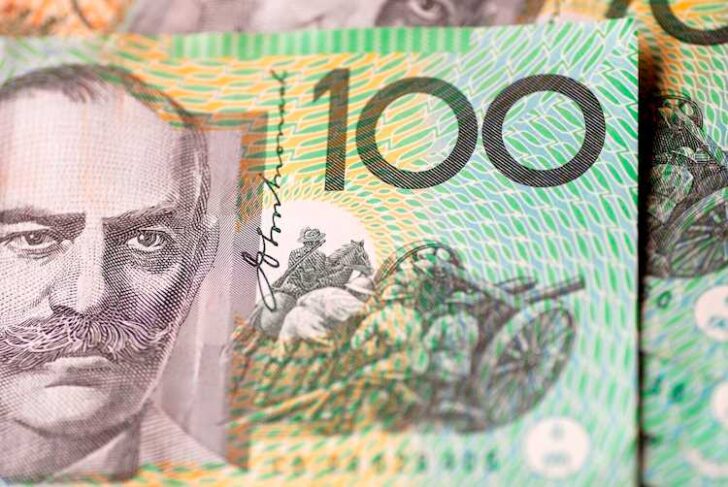- The Australian Dollar extended losses after weaker domestic data this week.
- The Australian Industry Index indicated prevailing contractionary conditions in private business activity.
- The US Dollar continues to gain after a stronger Employment Cost Index was released on Tuesday.
The Australian Dollar (AUD) remains under pressure following the release of the AiG Industry Index on Wednesday, indicating a prevailing contraction in private business activity in Australia during March. However, with the Reserve Bank of Australia’s (RBA) meeting scheduled for next week, it is widely anticipated to maintain interest rates at the current level of 4.35%.
The Australian Dollar lost ground after lower-than-expected Aussie Retail Sales data released on Tuesday, potentially affecting the RBA’s hawkish stance on interest rates. However, higher-than-expected domestic inflation data released last week has raised expectations that the central bank may delay interest rate cuts.
The US Dollar Index (DXY), which gauges the performance of the US Dollar (USD) against six major currencies, continues its rally ahead of the US Federal Reserve (Fed) policy meeting scheduled for Wednesday. US bond yields surged following higher-than-expected Employment Cost Index data, further bolstering the USD. Additionally, hawkish remarks from Fed officials, signaling no immediate need for rate cuts, undermined the AUD/USD pair.
Traders are expected to observe the release of the ADP Employment Change and ISM Manufacturing PMI from the United States (US) on Wednesday, ahead of the Fed’s Monetary Policy Statement. These releases will likely provide further insights into the state of the United States (US) economy.
Daily Digest Market Movers: Australian Dollar extends losses after weaker Aussie data
- The AiG Australian Industry Index decreased by 3.6 points to hit -8.9 points in April, marking continued contractionary trends over the past two years. March’s figure stood at -5.3.
- The ASX 200 began Wednesday trading lower, with all 11 sectors experiencing a decline. This drop followed robust US employment data that rattled Wall Street, raising concerns about sustained inflation and the potential for the US Federal Reserve (Fed) to prolong higher interest rates.
- According to the Financial Review, ANZ predicts the Reserve Bank of Australia will start reducing interest rates in November, spurred by last week’s inflation data surpassing expectations. Likewise, Commonwealth Bank, Australia’s largest mortgage lender, has revised its forecast for the RBA’s first interest rate cut timing, now projecting a single cut in November.
- During the first quarter, the US Employment Cost Index surged by 1.2%, marking the highest increase in a year and surpassing expectations of 1.0% as well as the previous figure of 0.9%. This latest data highlights enduring wage pressures, which could amplify the effects of persistent inflation within the US economy.
- In March, the seasonally adjusted Australian Retail Sales experienced a decrease, failing to meet expectations. This marked the first decline since last December, with turnover decreasing across all industries.
- According to the CME FedWatch Tool, the likelihood of the Federal Reserve maintaining interest rates at their current level during the June meeting has risen to 91.6%, climbing from 81.2% a week ago. This narrative of prolonged higher rates from the Fed is bolstering the US Dollar and posing a hurdle for the AUD/USD pair.
- The Economic Times reported on Monday that Fed Chair Jerome Powell mentioned it would likely take “longer than expected” to gain confidence that inflation is progressing towards the central bank’s 2% target. Powell added that the central bank can maintain rates at a high level “as long as needed.” Fed Governor Michelle Bowman expressed her view of “upside risks” to inflation. Meanwhile, Minneapolis Fed President Neel Kashkari raised the possibility of no rate cuts occurring this year.
Technical Analysis: Australian Dollar moves below 0.6500
The Australian Dollar trades around 0.6470 on Wednesday. The pair has breached the lower boundary of a symmetrical triangle and the significant level of 0.6480. Additionally, the 14-day Relative Strength Index (RSI) is below the 50-level, indicating a bearish sentiment.
The AUD/USD pair could potentially move toward the vicinity of the psychological level of 0.6400, followed by April’s low of 0.6362. A further decline below this level might prompt a test of the lower boundary of the descending channel, around the major level of 0.6350.
If there’s an upward movement, the AUD/USD pair might challenge the symmetrical triangle’s lower boundary near the psychological level of 0.6500. A breakthrough above this level could bolster the pair to revisit the upper boundary, situated around the level of 0.6585.


Leave a Reply